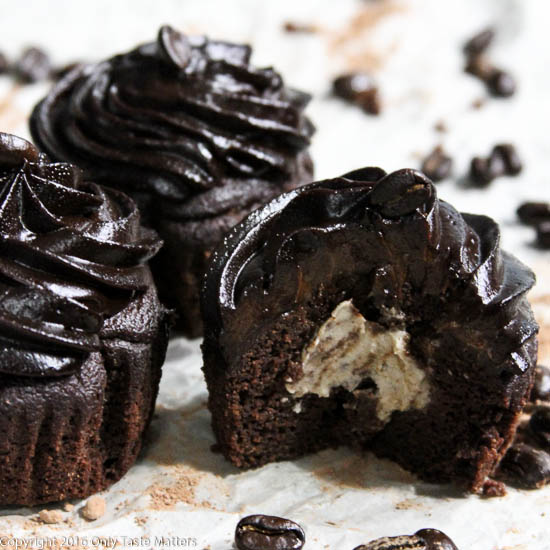“You’d never know it’s gluten-free.” How many times have you heard that? And how many times have you thought, “Yeah right.”? The reason it’s just not believable is because gluten-free has somehow come to mean “made with strange flours” such as soy, amaranth, sorghum, quinoa, etc. However gluten-free actually just means free of gluten. That’s all. Nowhere is it written that bad tasting flours need to be used. The statement also implies that the gluten somehow enhances cake, which it does not. If anything, it makes it dry.
Now there are quite a few myths out there about gluten-free cake baking. Most, if not all, are perpetuated by gluten-free bakers. Well get ready to have your mind blown.
Myth #1: Gluten enhances the flavor of cakes.
False. Gluten which only accounts for about 17% of all-purpose flour and about 13% of cake flour, gives elasticity to dough and often gives the final product a chewy texture. However, who wants their cake chewy? The #1 complaint I hear about the gluten-free cakes currently on the market is that they are too chewy. Everyone is so fixated on replacing the gluten. But why?
Every cake recipe tells you to mix the flour only until it is combined. This is so you don’t activate too much gluten and make a cake that is tough or dry. Gluten-free baking frees you from this worry. No more battling the gluten. Hurray!
Make your own gluten-free flour mix.
Myth #2: Gluten is needed to hold cakes together.
Not true. While yeast-raised doughs rely heavily on gluten for structure, cakes and cookies are another story altogether. I’ve never had a problem getting my gluten-free cakes to hold their shape. After all my gluten-free research, I was really concerned. I was led to believe that the gluten was required to hold a cake together. Turns out it was a needless worry. Many gluten-free flours contain substances to create this “stickiness”. Think starch, for instance.
Follow my recipes for gluten-free flour mixes.
Myth #3: Gluten-free baking always requires xanthan gum
Nope. Xanthan gum is found in practically every gluten-free flour mix on the market. The common belief is that xanthan gum is necessary to help replace the gluten that is missing from these flours. (Again, let it be missing. We’re better off without it.) Xanthan gum is a thickener and an emulsifier. An emulsifier helps ingredients blend better, such as water and oil, and stay mixed while sitting on the shelf. Emulsifiers are found in tons of food that you purchase from the store such as ice cream or salad dressings. But you know what else is an emulsifier? Eggs! That’s right, eggs. So if your cake or cookie recipe is not vegan, there is no need for xanthan gum because you are using eggs.
Create a gum-free gluten-free flour mix.
Myth #4: Baked goods made with gluten-free flours don’t taste as good as those made with wheat flour.
Ah no. While many gluten-free flours do taste awful, several of the flours actually create baked goods that taste just as good if not better than those made with wheat flour. For example, rice and nut flours hold moisture better than wheat flour. They create a better tasting product that lasts longer. And yes, there are many gluten-free flours out there that taste as bad as they sound: Sorghum flour, amaranth flour, soy flour. I still have no idea what teff flour is. But just because a flour is “gluten-free” does not necessarily mean it tastes terrible. I mean heck good chocolate is gluten-free.
Learn to make great tasting gluten-free flour mixes.
Myth #5: All Gluten-free flours are healthy.
A swing and a miss. I cannot stress this enough. There is NO SUCH THING as “healthy cake.” It is an oxymoron like jumbo shrimp or fat-free ice cream. It absolutely does not exist. No matter what flours you use, cake still has sugar. It still has butter. It is still cake after all. And yes, evaporated cane juice and agave are still sugar. It is true that certain gluten-free flours are healthier than wheat flour, but the ones that taste good are not. Furthermore, while flours like soy flour, flaxseed meal, fava bean flour and quinoa flour may be “healthier” than wheat flour, they do not make “healthy” cake. (Again, there is no such thing.) Using these flours may make the finished product “healthier” than traditional cake, however, it will also taste inferior. I’d rather eat two bites of cake that tastes good, than two slices of sawdust. If you want a healthy snack, eat an apple or munch on some crudité. And honestly, if you are relying on cake for your daily nutrients, I can’t help you. Seek professional help such as a dietitian or psychiatrist or both.
Prepare your own gluten-free flour mix.







10 thoughts on “Fact or Fiction: Gluten-free Cake Baking”